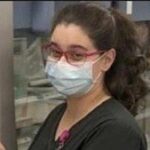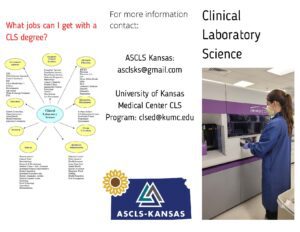Volume 37 Number 2 | April 2023
Heather Santaniello, MLS(ASCP)CMMB(ASCP)CM, ASCLS Political Action Committee Chair, ASCLS Ascending Professionals Forum Councilor-at-Large

Workforce shortages are being addressed by taking people with biology degrees and thrusting them into jobs they don’t have the necessary tools to succeed in. This endangers not only patient care but damages the reputation of our profession. We need a long-term solution, not a quick fix that doesn’t ensure the best quality of work. How do we execute the long-term goal? How do we make a profession meant for the background of patient care come forward? It’s not an easy task or a one-person job. It will take all of us to succeed. Everyone must do their part—no matter how small—for this to work.
What have you been doing to help us meet this goal? Talking about it to everyone you meet is not something that should be brushed aside as if it doesn’t matter. It does matter! You may have to tell the same person multiple times, maybe even several times, but you must do it. Educating people about the profession is important, and the younger generations are the key to how we address the workforce shortage. Middle schoolers, high schoolers, and college students who haven’t decided on a major. These are all the people we need to reach to succeed. Our focus should be on informing and promoting the profession to these groups. What have you done to do this? What could I do to do this? These were the thoughts racing through my head when I was thinking of ways to help promote the profession. What did I do about it? I came up with an idea and I took the initiative and made my idea into a real thing, and then I acted.
The idea: A trifold brochure which highlights the profession in terms that are understandable to the younger generation and people in college with no medical background. After two months, one of the first versions of the brochure was complete. After getting a few copies printed, I shared them with my constituent society. The support and feedback helped me fix typos, add contact information, and solidified that this was important to follow through with.
Once I was satisfied with the final product, I ordered 50 copies. I also posted a digital copy on my social media accounts and asked if any of my teacher friends could help me get it into local high schools. One of my friends responded and offered to distribute them in her school district. I sent her a digital copy so she could send them out to the high schools in her district, and when my first 50 copies arrived, I set aside some for my friend. Then I got to work finding a way to get the rest into more schools.
I started with sending emails to the counselors of the school district I went to, and my kids go to now, because it was familiar territory for me. Their school websites were easier for me to navigate, and I felt staying in my comfort zone for the first batch would give me the courage to push forward and extend the invitation to other districts. I sent each of the five high schools in the district an email identifying myself and asking if I could bring them copies of a brochure which highlights the clinical laboratory profession. It was a simple email with two sentences—that’s it.
Throughout the week I slowly started to get responses from them saying it would be great and to drop them by the office. I received responses back from four out of the five high schools. So, at the end of the week, I drove to each one of those four schools and dropped off the brochures. I then immediately ordered 100 more copies with express shipping.
While I was waiting for these to arrive, I sent out emails to two local community colleges. I also reached out to two more districts, which had six high schools each, and three high schools responded. I documented my accomplishments each time on social media, and the same teacher friend who gave her school district digital copies tagged one of her teacher friends in a school district about 30-45 minutes away from my local area. She sent her friend the digital copy so she could send it to the two high schools in her district. Around this time one of the local community colleges responded and I mailed them a bunch from the batch of 100.
The next goal for these brochures is to get them in rural districts out in western Kansas, the Missouri side, and eventually nationwide. It’s a big goal, but even if I don’t succeed in achieving the bigger goal, the small accomplishments that were made so far are impactful. Doing nothing is not an option! Trying is the best shot we have to succeed in fixing the workforce shortage long term. The more people who know about this profession, the more people who will potentially enter this field, creating a ripple effect of positive outcomes—from CLS programs, to employers, to professional societies.
Heather Santaniello is a Medical Laboratory Scientist Supervisor at The University of Kansas Health System in Kansas City, Kansas.
Author Heather Santaniello created a trifold brochure which highlights the medical laboratory science profession in language targeted to the younger generation. She then distributed them to local high schools and community colleges.
“Educating people about the profession is important, and the younger generations are the key to how we address the workforce shortage.”
